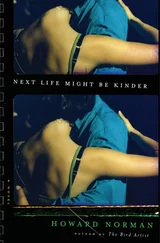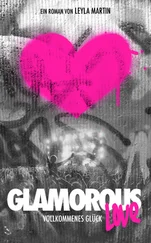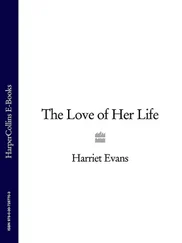Harriet Martineau - Eastern Life
Здесь есть возможность читать онлайн «Harriet Martineau - Eastern Life» — ознакомительный отрывок электронной книги совершенно бесплатно, а после прочтения отрывка купить полную версию. В некоторых случаях можно слушать аудио, скачать через торрент в формате fb2 и присутствует краткое содержание. Жанр: unrecognised, на английском языке. Описание произведения, (предисловие) а так же отзывы посетителей доступны на портале библиотеки ЛибКат.
- Название:Eastern Life
- Автор:
- Жанр:
- Год:неизвестен
- ISBN:нет данных
- Рейтинг книги:5 / 5. Голосов: 1
-
Избранное:Добавить в избранное
- Отзывы:
-
Ваша оценка:
- 100
- 1
- 2
- 3
- 4
- 5
Eastern Life: краткое содержание, описание и аннотация
Предлагаем к чтению аннотацию, описание, краткое содержание или предисловие (зависит от того, что написал сам автор книги «Eastern Life»). Если вы не нашли необходимую информацию о книге — напишите в комментариях, мы постараемся отыскать её.
Eastern Life — читать онлайн ознакомительный отрывок
Ниже представлен текст книги, разбитый по страницам. Система сохранения места последней прочитанной страницы, позволяет с удобством читать онлайн бесплатно книгу «Eastern Life», без необходимости каждый раз заново искать на чём Вы остановились. Поставьте закладку, и сможете в любой момент перейти на страницу, на которой закончили чтение.
Интервал:
Закладка:
The adytum is small. The four figures which it once contained are gone; but their seat remains, and their marks against the wall. Two dark chambers, containing some imperfect sculptures, are on either hand; and this is all. This temple is twenty feet deeper in the whole than the small one at Aboo-Simbil, but it is inferior in workmanship.
On our return to the dahabieh, we saw a sight very rare to us now; – a cloudy sky. The sky looked angry, with its crimson flushes, and low hanging fiery clouds. We found the people angry too, – upon a subject which makes people elsewhere strangely passionate, – a currency question. The inhabitants of Dirr have only recently learned what money is, having traded by barter till within a very short time. They had this evening some notion in their heads which our dragoman and Rais thought absurd, about a change in the value of money in the next trading village: and they came down to the bank clamouring for more money for their mats and necklaces. When all explanation and remonstrance failed to quiet them, Alee snatched up a tub, and threw water over them: and then arose a din of screams and curses. We asked Alee what the curses were: they were merely the rational and safe hope that we might all die.
The crimson flushes faded away from the sky, and the angry clouds melted: but we had now no moon except before breakfast, when we were glad to see her waste daily.
There was another temple in waiting for us the next morning (January 9th) – another temple of the Great Ramases; that of Subooa. The novelty here was a very interesting one; the Dromos (Course or avenue) and its sphinxes.
The temple is about five hundred yards from the shore; and a few dwellings lie between. The sand was deep and soft, but, for once, delightfully cool to the feet, at this early morning hour. This sand has been so blown up against the sphinxes as to leave but little of them visible. There are four on each hand, as you go up to the propyla: but one is wholly covered; and five others are more or less hidden. Two are unburied; but their features are nearly gone. The head of another is almost complete, and very striking in its wise tranquillity of countenance. Two rude statues stand beside the sphinxes at the entrance of the dromos; and two colossi lie overthrown and shattered beside their pedestals at the inner end of the dromos, and before the propyla. The cement seems to have fallen out between the stones of the propyla: but over their mouldering surface are war-sculptures dimly traceable: – the conquests of Ramases again. Within the gateway is the hall where ten Osirides are ranged, five on each hand, dividing the hall into three aisles. Here I saw, for the first time, how these massive temples were roofed. The ten Osirides supported the heavy architrave, whose blocks joined, of course, over the heads of the colossi. From this architrave to the outer walls were laid massive blocks of stone, which formed the roof. We shall see hereafter that when it was desired to light the interior, the roof over the middle aisle was raised above that of the side aisles; and the space left open, except for the necessary supporting blocks, or (as at El-Karnak) a range of stone gratings.
The Osirides here are very rude; composed of stones of various shapes and sizes, cemented together. I suppose they were once covered with cement; but now they look, at the first glance, like mere fragments of pillars. A second look, however, detects the crossed arms, and the crosier and flagellum. – Of the adytum at the extremity nothing was visible but the globe and asps over its door; and the sand was so drifted into the hall that we could see over the wall at the upper end. It will be perceived that this is a rude and ruined temple, with no interest belonging to it but its antiquity and its array of sphinxes.
That evening, we had the promise of another temple for the next morning's work. We reached Dakkeh, the Pselchê of Strabo, at 10 P.M.: but we could not moor under the western bank, from the strength of the wind, and were obliged to stand across to the other shore.
The morning of the 10th was bright and cool, and we were early ashore, where we saw a good deal besides the temple. A village, small, but not so minute as usual, stands near the bank; and its inhabitants are good-looking and apparently prosperous. I saw, from the top of the propylon, a large patch of fertile land lying back on the edge of the Desert, or in it. A canal or ditch carried water from the river to this land, where there were two or more sakias to lift it. At least, I saw a belt of flourishing castor-oil plants and other shrubs extending from the river to where they met the sakias. Further in the Desert I observed more of those grey expanses which tell of cultivable soil beneath, and of former irrigation. This must have been a flourishing district once; and it is not a distressed one now.
The women were much adorned with beads, – blue, black, and white. Some would permit us to examine them: others fled and hid themselves behind huts or walls, on our merely looking in their faces: and of these none was so swift as the best-dressed woman of them all. She had looped back, with her blue necklace, the mantle she wore on her head, to leave her hands and eyes free for making her bread. Of all the scamperers she was the swiftest when our party began to look about them. A mother and daughter sat on the ground within a small enclosure, grinding millet with the antique quhern: a pretty sight, and a dexterously-managed, though slow process. Several of the women had brass nose-rings, which to my eyes look about as barbarous and ugly as ear-rings; and no more. When we come to the piercing flesh to insert ornaments, I do not see that it matters much whether the ear or nose is pierced. The insertion is surely the barbarism.
While I was on the top of the propylon of Dakkeh, I saw far off to the north-west a wide stretch of blue waters, with the reflection of shores and trees. Rather wondering how such a lake or reach of the river could be there, while the Nile seemed to be flowing northeast, and observing that these waters were bluer than those of the river, I asked myself whether this could possibly be the mirage, by which I had promised myself never to be deceived. My first thought was of mirage: but a little further study nearly convinced me that it was real water, – either a lake left by the inundation, or a reach of the river brought there by a sudden bend. I was still sufficiently uncertain to wish my friends to come up and see: though the reflection of the groves and clumps on the banks was as perfect as possible in every line. Just as I was going down to call my party, I saw a man's head and shoulders come up out of the midst of the lake: – a very large head and shoulders, – such as a man might have who was near at hand. The sensation was strange, and not very agreeable. The distant blue lake took itself off in flakes. The head and shoulders belonged to a man walking across the sand below: and the groves and clumps and well-cut banks resolved themselves into scrubby bushes, patches of coarse grass, and simple stones. This was the best mirage I have ever seen, for its beauty and the completeness of the deception. I saw many afterwards in the Desert; and a very fine one in the plain of Damascus: but my heart never beat again as it did on the top of the Dakkeh propylon. – I had a noble view of the Desert and the Nile from that height; and it was only sixty-nine steps of winding stair that I had to ascend. These propyla were the watch-towers and bulwarks of the temples in the old days when the temples of the Deities were the fortifications of the country. If the inhabitants had known early enough the advantage of citadels and garrisons, perhaps the Shepherd Race might never have possessed the country; or would at least have found their conquest of it more difficult than, according to Manetho, they did. »It came to pass,« says Manetho (as Josephus cites him), »I know not how, that God was displeased with us; and there came up from the East, in a strange manner, men of an ignoble race, who had the confidence to invade our country, and easily subdued it by their power without a battle. And when they had our rulers in their hands, they burnt our cities, and demolished the temples of the gods, and inflicted every kind of barbarity upon the inhabitants, slaying some, and reducing the wives and children of others to slavery.« It could scarcely have happened that these Shepherds, »of an ignoble race,« would have captured the country »without a battle,« and laid hands on the rulers, if there had been such citadels as the later built temples, and such watch-towers and bulwarks as these massive propyla. Whenever I went up one of them, and looked out through the loop-holes in the thick walls, I felt that these erections were for military, full as much as religious purposes. Indeed, it is clear that the ideas were scarcely separable, after war had once made havoc in the valley of the Nile. As for the non-military purposes of these propyla; – they gave admission through the portal in the centre to the visitors to the temple, whether they came in the ordinary way, or in the processions which were so imposing in the olden times. It must have been a fine sight, from the loop-holes or parapets of these great flanking towers, – the approach or departure of the procession of the day, – the banners bearing the symbol of god or hero; the boat-shrine borne by the shaven and white-robed priests, in whose hands lay most of the power, and in whose heads all the learning, of their age. To see them marching in between the sphinxes of the avenue, followed by the crowd bearing offerings; the men with oxen, cakes, and fruits, and the women with turtle-doves and incense, – all this must have been a treat to many a sacerdotal watchman at this height. – Such a one had probably charge of the flags which were hoisted on these occasions on the propyla. There are on many of these towers, wide perpendicular grooves, occupied by what look like ladders of hieroglyphic figures. These grooves held the flag-staves on festival days, when the banners, covered with symbols, were set floating in the air. – These propyla were good stations from which to give out news of the rising or sinking of the Nile: and they were probably also used for observatories. They were a great acquisition to the country when introduced or invented; and their introduction earlier might, perhaps, as I have said, have materially changed the destinies of the nation. The instances are not few in which these flanking towers have been added to a pylon of a much earlier date.
Читать дальшеИнтервал:
Закладка:
Похожие книги на «Eastern Life»
Представляем Вашему вниманию похожие книги на «Eastern Life» списком для выбора. Мы отобрали схожую по названию и смыслу литературу в надежде предоставить читателям больше вариантов отыскать новые, интересные, ещё непрочитанные произведения.
Обсуждение, отзывы о книге «Eastern Life» и просто собственные мнения читателей. Оставьте ваши комментарии, напишите, что Вы думаете о произведении, его смысле или главных героях. Укажите что конкретно понравилось, а что нет, и почему Вы так считаете.












